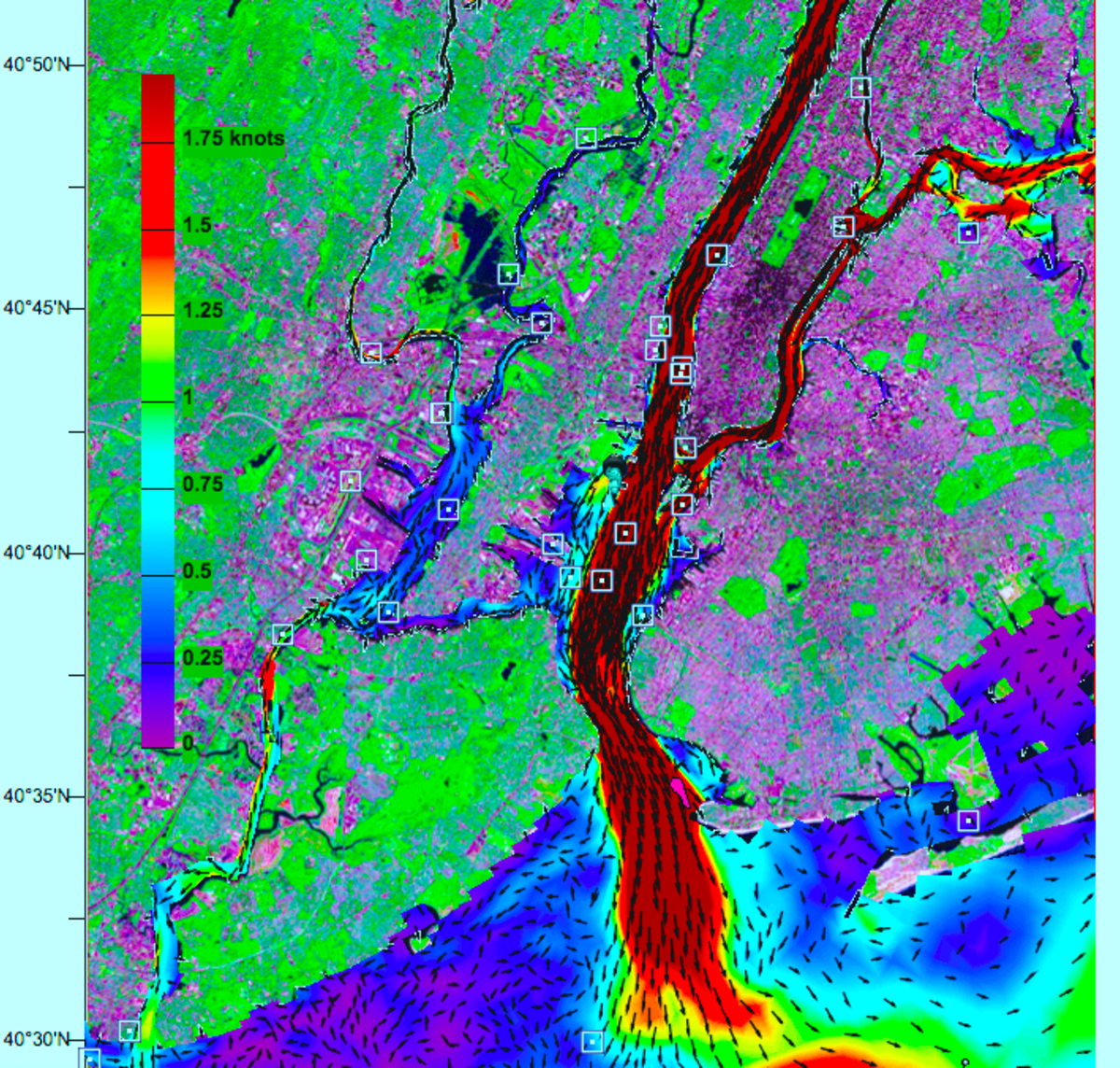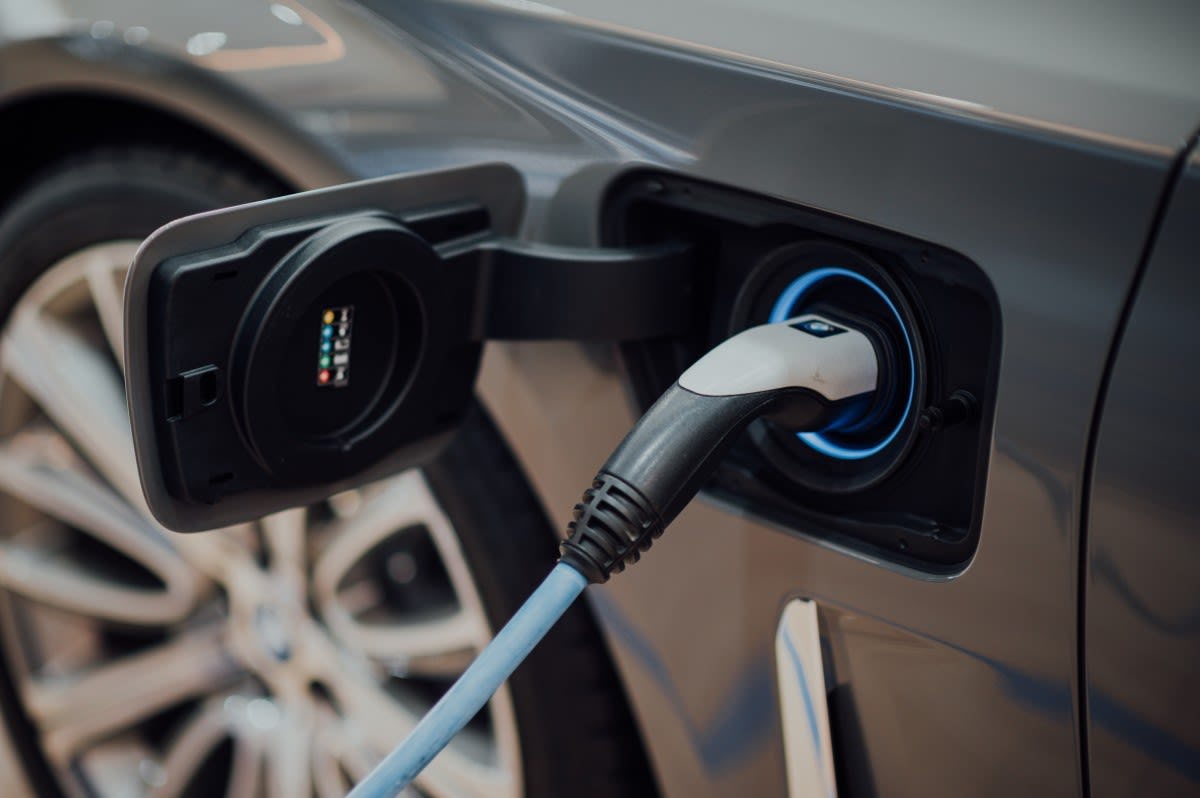How Stevens Is Supporting the Pivot to Green Energy and Carbon Reduction
Researchers are innovating the electric vehicles, batteries, wind farms and solar panels of the future
As global temperatures and fuel prices rise, the push to develop renewable, lower-carbon energy sources, transportation and power grids is gathering momentum.
U.S. President Joe Biden has made renewable energy a centerpiece of new infrastructure legislation and also issued executive orders prioritizing cleaner, lower-emissions energy, electric vehicles (EVs) and commitments to wind power in the New York-New Jersey metropolitan region and elsewhere.
Stevens has long contributed significant innovation and technical expertise to the work of rethinking the future of energy.
Engineering wind power in the Northeast
The U.S. Departments of Interior, Energy and Commerce have set a goal of 30 gigawatts (GW) of U.S. offshore wind production by 2030. Doing so would power more than 10 million homes annually and remove nearly 80 million metric tons of carbon dioxide emissions that would otherwise contribute to global warming and climatic change. By 2050, the plan is to increase wind power generation to 110 GW, nearly quadrupling those benefits.
In New Jersey, the Ocean Wind Offshore Wind Project — an effort to install 92 turbines in the sea 15 miles off the southern coastline — will be readied for environmental review. If approved, it would become the nation's third commercial-scale offshore wind project, with capacity to power 500,000 homes. Offshore lease sales off the state's coast will open up additional opportunities by 2022.
"The university's long-term efforts in coastal resilience can be directly translated to the installation and operation of offshore wind turbines," notes researcher and Davidson Lab Director Muhammad Hajj, who chairs the department of Civil, Ocean and Environmental Engineering.
Faculty researchers work in key areas including:
Improvements in turbine structures and blades. Civil engineering professor Weina Meng develops seawater resistant, high performance concretes that can be cast underwater, provide corrosion protection, and last 50 years or more. Mechanical engineering professor Gizem Acar analyzes the motions, forces and stresses of wind turbine blades and rotors to inform and improve design of components and recommend control strategies to prevent the mechanical failure of turbines. Additional researchers bring expertise in analyzing vibrational data to identify damage progression as turbines age.
Wind farm site optimization. Davidson Laboratory's cadres of researchers and faculty have decades of experience installing and remotely operating experimental stations at locations along the New York and New Jersey coastlines. And faculty such as geomechanics researcher Rita Sousa bring expertise at determining optimal locations for siting turbine foundations by mapping potential geological hazards on the sea floor such as cyclic liquefaction, slope instability, subsidence and creep.
Anti-icing nanotechnologies. Mechanical engineering professor Chang-Hwan Choi develops nanotextures engineered to help prevent aircraft wings from icing over, work that is also applicable to the winterization of wind-energy turbines.
Weather, current and wind-field studies. Davidson Lab has operated the New Jersey Coastal Protection Technical Assistance Service since 1993, conducting field data collection and numerical, physical and data-driven modeling. The lab's personnel operate two research vessels, a personal watercraft and a fleet of drones and experimental stations in coastal waters. Stevens has also developed several proprietary systems to provide continuous, high-resolution measures and forecasts of regional waves, currents and coastal erosion.
"Through the Stevens Flood Advisory System, we are continuously assimilating wind fields from Canadian, American and European weather prediction models," Hajj explains, "providing 24/7 high-resolution four-day predictions of local wind, wave, current and storm surge forecasts."
Environmental, sustainability studies and planning. Stevens professor Dibyendu "Dibs" Sarkar brings expertise in assessment of environmental impacts, life cycles and costs and benefits of wind-farm facilities. Faculty researchers have also developed technologies used in both search-and-rescue missions and wildlife monitoring and assessment.
Transport support: Electric vehicles, better batteries, biofuels
President Biden's executive orders also make greener transportation a priority, including a goal of converting all federal vehicles to zero-emission vehicles (currently fewer than 1% fall into this category) with a goal of cleaning the air and slowing global warming. That means development of more efficient, more cost-effective electric vehicles and better batteries has become a priority.
Once again, Stevens is at the forefront of these technologies.
Chemical engineering and materials science professor Jae Chul Kim investigates improvements in and develops alternatives to lithium-ion batteries, testing component substances such as a lithium metal anode, all-solid electrolytes, and sodium and potassium storage cathodes — all of which could shift the paradigm of energy-storage materials.
"Lithium-ion technology is almost at its maximum level," he explains, "but we will still need a better, higher-energy density and safer battery to power the vehicles and technologies of the future."
Chemical engineering and materials science professor Pinar Akcora studies energy technologies including the properties of ionic liquid-containing, polymer-decorated nanoparticles that can be used as electrolytes for fuel cell membranes and electroactive actuators.
Former Stevens chemical engineering professor and department chair Ron Besser recently co-founded a startup, ExoCell Power, with alumnus Matthew Mayer '19 to commercialize Stevens-developed research on a novel light fuel-cell technology that could displace state-of-the-art batteries through improved performance. The proprietary fuel cell extracts energy from ultralight hydrogen gas, producing more energy and higher power than standard solid-state batteries.
It's believed the thinner, lighter, membrane-based cells could power drones and other light vehicles for up to 10 times longer than conventional batteries before recharging is needed.
Mechanical engineering professor Annie Zhang examines the thermal conductivity of a wide range of nanocompounds such as molybdenum disulfide, molybdenum diselenide, tungsten diselenide, bismuth telluride, tin chalcogenide and antimony telluride that hold potential as EV battery materials.
Biofuels have also long been an area of Stevens focus.
Working with students and faculty at the Center of Environmental Systems, director Christos Christodoulatos tests small- and medium-scale systems to cultivate microalgae in wastewater streams derived from industrial plants, then press and process algal oils to create fuels that hold promise to power light vehicles and small facilities. The U.S. Department of Defense is a long-time collaborator in the work, which will next proceed to a one-acre pilot test.
Solar, wave energy, power grid projects continue
Faculty and students also continue pressing forward research in additional renewable-energy projects such as solar panel optimization, a longtime area of Stevens research.
Professor Dilhan Kalyon collaborates with NYU researcher Stephanie Lee to investigate alternatives to conventional silicon-based photovoltaic panels, which are expensive and time-consuming to manufacture. The duo found that conjugated polymer-based gels may be both more efficient and more scalable as solar cell material than conventional materials; their findings formed the basis of a recently issued U.S. patent.
Mechanical engineering professor Shima Hajimirza has also received multiple awards from the National Science Foundation to fund investigations into improving the energy efficiency of thin-film solar cells, as well as utilizing computational modeling tools to more accurately predict the response of materials to radiative heat.
"Thin-film solar cells are at the forefront of innovation in photovoltaics technology," she points out, noting how AI and machine learning tools are only now beginning to be applied to solar design and deployment. "The smart design of new-generation solar cells can significantly benefit from surrogate-based optimization and transfer learning. To our knowledge, this is the first time these methods have been used in this context. We're very excited to be pioneers in this area."
The world's oceans also harbor enormous supplies of energy in the form of tidal and wind-driven waves.
Davidson Lab Director Hajj received a $1.8 million award from the Department of Energy in 2020 to begin developing and testing novel designs for wave-energy harvesters. He will collaborate with researchers at Virginia Tech and the private firm Resolute Marine Energy (RME) on the work.
"Deploying a device such as the one we propose could power floating marine observatories; nearby coastal industrial facilities, schools or hospitals; or be tapped during blackouts or other emergencies for reserve power," Hajj notes. "The right device could be a huge game-changer for renewable energy."
Yet another means of conserving carbon emissions involves optimizing the use of local, regional and national power grids.
Stevens electrical and computer engineering professor Lei Wu designs algorithmic methods that manage fluctuating resources on both the supply and demand sides, rethinking the ways power plants, transmission and distribution systems and consumers communicate with one another.
"We can’t rebuild the grid," concludes Wu. "But we can redesign and optimize the tools that control and operate it. It’s that optimization that underlies a greener, more efficient system that’s central to the day-to-day functioning of the grid — and one that can bounce back in the event of extreme weather."








